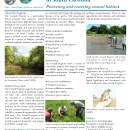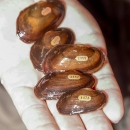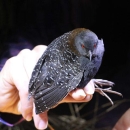Implementing the Service's Coastal Program in South Carolina
Established in 1995, the South Carolina Coastal Program works across coastal South Carolina and Georgia. Although the program works throughout the coastal plain, two new strategic focus areas (the Inland Coastal Plain Focus Area and the Tidal Wetland and Barrier Islands Focus Area) were established along several major river watersheds, key conservation areas, and vital wildlife corridors.
The vision of the South Carolina Coastal Program is to be an essential partner in the conservation of fish, wildlife, plants and their habitats along the South Carolina and Georgia coastal plains. We are leaders, both within and outside the Service, in the implementation of landscape-scale conservation delivery. The Coastal Program works with state natural resource agencies, NGOs, and private landowners to improve habitat for threatened, endangered, or at-risk species. Examples of species the program works with include: red-cockaded woodpecker, gopher tortoise, monarch butterfly, eastern black rail, Canby’s dropwort, southern hognose snake
Habitat protection
The program supports the protection of private lands of significant ecological value with conservation easements. An easement is a voluntary legal restriction that limits future development on a property while maintaining current land use by the owner and preserving the site’s natural resources. An easement is held by a nonprofit organization called a land trust. The Coastal Program works with land trusts to identify potential properties and develops various resources for conservation easement conservation easement
A conservation easement is a voluntary legal agreement between a landowner and a government agency or qualified conservation organization that restricts the type and amount of development that may take place on a property in the future. Conservation easements aim to protect habitat for birds, fish and other wildlife by limiting residential, industrial or commercial development. Contracts may prohibit alteration of the natural topography, conversion of native grassland to cropland, drainage of wetland and establishment of game farms. Easement land remains in private ownership.
Learn more about conservation easement baseline documentation reports.
Restoration
The program funds restoration projects that improve habitat for wildlife species and engage the public in wildlife conservation. Examples of projects include oyster reef establishment, wetland restoration, native wildflower meadows, longleaf pine habitat enhancement, and invasive species invasive species
An invasive species is any plant or animal that has spread or been introduced into a new area where they are, or could, cause harm to the environment, economy, or human, animal, or plant health. Their unwelcome presence can destroy ecosystems and cost millions of dollars.
Learn more about invasive species control.
Cooperative agreements
The program uses cooperative agreements to enter into partnerships and provide funding. A cooperative agreement is not a grant; rather, both parties work together to execute a project. Cooperative agreements are used when there is substantial involvement from the Coastal Program. Substantial involvement means that, after an award, program staff will assist, guide, coordinate, or participate in project activities. A cooperative agreement specifically lists the expectations of the partnership, reporting requirements, and duration of the partnership.





